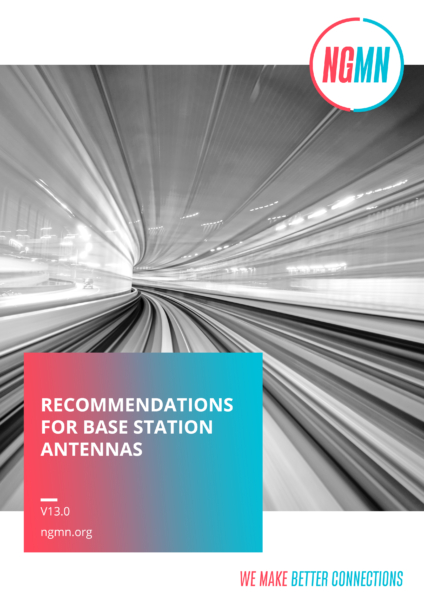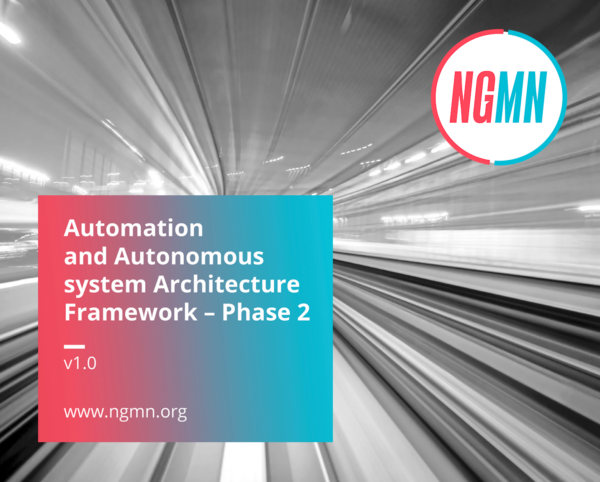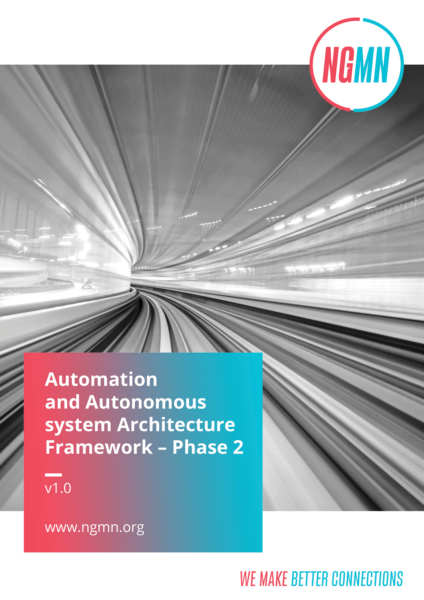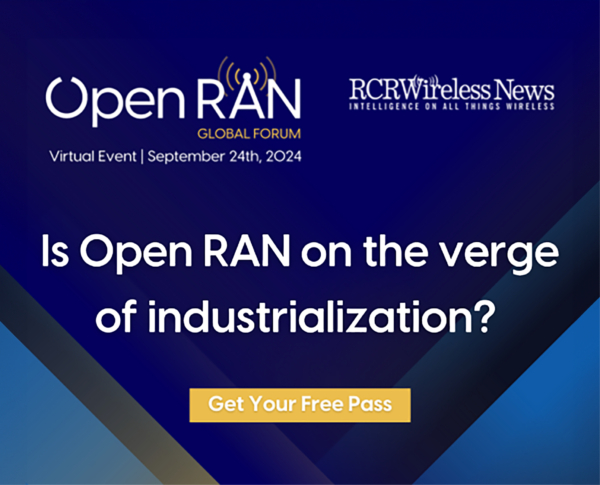Tag Archive for: 5G
Network X Americas
Dallas, Texas // by Juliya NaumovaWe are pleased to be Partner of the Network X Americas from 20-22 May 2025 in Dallas, Texas.
“Monetize the Network, Unleash the Experience.”
Network X Americas is the premier gathering for industry stakeholders eager to stay at the forefront of telecom innovation.
Join our Board Members Bernard Bureau / TELUS and Narothum Saxena / UScellular for insightful keynotes and panels:
- Service Provider Address: Telus Canada 21 May, 4:40pm
- Panel discussion on Telco AI strategies and implementations 22 May, 8:20am
- Panel discussion: Requirements for realizing 6G and achieving commercial success 20 May, 9:50am
- Panel Discussion: Unlocking the monetization potential with 5GSA and 5G-Advanced 22 May, 12:15pm
Register here.
Find the agenda here featuring contributions from our NGMN membership.
Access our latest publications here.
We invite interested industry players to become part of our endeavour.
Telco to Techco
Virtual // by Juliya NaumovaWe are excited to be part of the virtual Mobile Europe Event – TELCO TO TECHCO from 01-02 April 2025.
“Learn how operators can transition into techcos.”
Our CEO Anita Döhler will share NGMN’s view and recommendations on the opening panel: “What is a telco for?”.
Join her and other industry leaders on Tuesday 01 April 9:05am BST/ 10:05am CET for an insightful session on why telcos exist and how they must evolve to meet market needs.
Register now and find all the details on the agenda and speakers here featuring some of our NGMN Membership.
Access our latest publications here.
We invite interested industry players to become part of our endeavour.
FYUZ 2024
Dublin, Ireland // by Juliya NaumovaWe are excited to be part of the FYUZ 2024, 11-13 November 2024 in Dublin, Ireland.
Accelerating the future of open and disaggregated technologies.
Our CEO Anita Döhler will share NGMN’s view and recommendations on the panel “How Cloud & AI will accelerate Open RAN”.
Join her and other industry leaders on 12 Nov 10:00 – 10:20 to dive into how cloud native Open RAN, combined with #AI, offers operators a scalable, flexible platform to boost network performance and drive innovative services.
Register now and find all the details on the agenda and speakers here featuring some of our NGMN Partners.
Access our latest publications here.
We invite interested industry players to become part of our endeavour.
Network X
Paris, France // by Juliya NaumovaWe are pleased to be Partner of the Network X from 08-10 October in Paris.
Find the agenda here featuring our CEO and some of our NGMN Partners.
Access our latest publications here.
We invite interested industry players to become part of our endeavour.
The outline of a framework for autonomous networks based on AI
//in NGMN News, Press Release //by Juliya NaumovaNGMN outlines framework for autonomous networks
based on AI
The mobile communications industry has been provided with new guidance on the building blocks needed for autonomous networks that encompass Artificial Intelligence (AI) thanks to the publication of NGMN’s ‘Automation and Autonomous system Architecture Framework – Phase 2’, released today.
The latest updates provide guidance and direction on the use cases, requirements, and architectural principles to embrace interoperable, multi-vendor and standards-based autonomous networks that will help to manage the increasing complexity of the evolving 5G Advanced ecosystem.
“AI has huge potential to revolutionise the way we plan, build, operate and maintain networks, the services we offer and our ability to respond rapidly to customer needs,” said Arash Ashouriha, Chairman of the NGMN Alliance Board and SVP Group Technology at Deutsche Telekom. “This publication provides a further foundation for the mobile industry to move forward together by developing and embracing a standards-based approach to autonomous networks.”
This framework outlines architectural considerations for enhancing operational capabilities through AI and Machine Learning (ML), enabling operational capabilities beyond typical human response times amid growing networking complexities, while guiding standards development organisations in delivering a more customised, user-centric experience.
“With the ever-increasing complexity of networks and the move towards disaggregated and cloud-based architectures, it is more fundamental than ever that we manage that complexity by introducing AI at all levels of our networks and operations,” said Michael Irizarry, Member of the NGMN Alliance Board and Executive Vice President and Chief Technology Officer, UScellular. “UScellular is proud to have led this activity working alongside our partners at NGMN. We strongly encourage the industry to adopt this guidance when developing the industry standards that are necessary to ensure autonomous networks can be delivered through open and interoperable standards.”
The autonomous system architecture framework is intended to serve as guidance in the development of inter-operable and market enabling specifications, for the continuing advancement of an automated and self-adaptive 5G ecosystem of heterogeneous access, virtualisation, forward-looking service enablers and emerging usage scenarios.
Topics covered in the publication include:
- Management of complexity
- Network, service and device evolution
- Autonomous System Management and Orchestration and the role of Large Language Models (LLMs)
- Co-operative technologies and processes
- Use cases
- Security and privacy
- Role of industry standards
The publication can be downloaded from here
The publication was developed with input from across the industry, with NGMN’s membership comprising operators, vendors, and research institutions. This collaboration enables NGMN to offer strong guidance on key industry issues, driving progress on today’s most important topics, including NGMN’s Strategic Focus Topics: Mastering the Route to Disaggregation, Green Future Networks, and 6G. NGMN encourages all stakeholders across the value chain to join the Alliance in this endeavour.
Further information and all NGMN publications can be found on the website at ngmn.org.
About NGMN Alliance
The NGMN Alliance (NGMN) is a forum founded by world-leading Mobile Network Operators and open to all Partners in the mobile industry. Its goal is to ensure that next generation network infrastructure, service platforms and devices will meet the requirements of operators and ultimately will satisfy end user demand and expectations. The vision of NGMN is to provide impactful industry guidance to achieve innovative, sustainable and affordable mobile telecommunication services for the end user with a particular focus on Mastering the Route to Disaggregation / Operating Disaggregated Networks, Green Future Networks and 6G, whilst continuing to support 5G’s full implementation.
NGMN seeks to incorporate the views of all interested stakeholders in the telecommunications industry and is open to three categories of participants/NGMN Partners: Mobile Network Operators (Members), vendors, software companies and other industry players (Contributors), as well as research institutes (Advisors). NGMN invites all parties across the entire value chain to join the Alliance in these important endeavours.
Press Contact
NGMN Alliance e.V.
Elisa Dwyer
press@ngmn.org
Follow us on X & LinkedIn
Press Office
Proactive International PR
NGMN@proactive-pr.com
Join the NGMN Alliance
office@ngmn.org
https://www.ngmn.org/about-us/membership.html
Automation and Autonomous system Architecture Framework – Phase 2
//in 2024, Network Automation and Autonomy Based on AI, ODiN, Publications //by Juliya Naumova
GSMA M360 APAC 2024
Seul, South Korea // by Juliya NaumovaWe are excited to be part of the GSMA M360 APAC 2024 on 01-02 October In Seoul.
Advancing Digital Nations with AI.
Our CEO Anita Döhler will share NGMN’s view and recommendations on “AI IN NETWORK AUTOMATION, ENERGY EFFICIENCY AND “BEYOND 5G”.
Join her and other industry leaders on:
02 Oct 07:45 – 09:30 Roundtable “Navigating the Next Frontier: The Role of NTN in the Future of Global Telecommunications”
02 Oct 11:45-13:00 Session 1 of DXAF AI Summit “AI Network Transformation and Generative AI”
Register now and find all the details on the agenda and speakers here.
Access our latest publications here.
We invite interested industry players to become part of our endeavour.
RCR 6G Virtual Forum
Virtual // by Juliya NaumovaWe are excited to be part of the virtual RCR 6G Forum on 01 October.
The Next Leap: Will 6G Deliver? Join NGMN Senior Programme Manager Sparsh Singhal, NGMN Board Member from UScellular and other industry leaders for various discussions – register for free here.
Find the agenda here featuring some of our NGMN Partners.
Access our latest publications here.
We invite interested industry players to become part of our endeavour.
Open RAN Global Forum 24
Virtual // by Juliya NaumovaWe are excited to be part of the virtual Open RAN Global Forum on 24 September.
Is Open RAN on the verge of industrialization? Join NGMN Board Members and other industry leaders for panel sessions – register for free here.
Find the agenda here featuring some of our NGMN Partners.
Access our latest publications here.
We invite interested industry players to become part of our endeavour.
CONTACT
NGMN Alliance e.V.
Signature by Regus
Breite Straße 3
40213 Düsseldorf, Germany
Phone +49 211 540 596 005
office@ngmn.org









